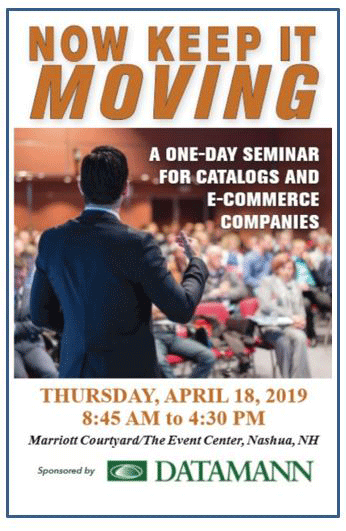Two things really stand out here, one recent, one old-school. Let's begin with the old-school example.
Twenty-five years ago at Lands' End we had about 50 catalog in-home dates. As we've learned in the past few months, you can have 50 in-home dates as long as the vast majority of customers get a handful of mailings and only the very best-of-the-best get fifty. But when half of the customers are being clobbered with 25ish contacts, well, a funny thing happens.
- Every catalog circulation decision, evaluated independent of every other catalog circulation decision, looks profitable.
- When you try to optimize the decision on an annual basis, you realize you made a TON of bad decisions.
We were going to implement an optimization algorithm, one that determined the most profitable strategy. This tactic required each business unit to work together for the benefit of the profit-and-loss statement. It meant that a customer might not get six Home mailings ... instead the customer might get two Home mailings but the company would be more profitable.
Understandably, if you were in the Home divisions you'd be upset if you had to contract your business in the name of "Optimization". As a result, the program was not implemented. A few months later I interviewed for a job in Dallas with IBM ... they were going to take their knowledge combined with our proposed strategy and create a product to help catalogers optimize their businesses.
That business still exists today ... and the vast majority of catalogers still don't trust 'em. That's what happens when you use math that takes control away from Business Leaders.
Speaking of math that takes control away from Business Leaders, I sat in a meeting where the Online Marketing Manager explained how she worked with a vendor to boost conversion rates by about 25% (sometimes much higher) by optimizing/personalizing the merchandising assortment customers saw when they visited the home page or key landing pages. She made her company Brinks Trucks worth of coin. She wasn't even looking for credit, she just wanted to do what was right for her business. She gets done with her presentation, there's a smattering of applause, and then one Exec leans over and whispers to another Exec ...
- "She's only been here six months. Eventually she'll figure out how to fit in here."
My goodness ... this young lady just made sure that the Exec would earn a six-figure (or better) bonus payout and the Exec ... well, she sure missed the point of the whole exercise.
Optimization isn't about fitting in.
Optimization isn't about pleasing everybody.
Optimization is about NOT WASTING RESOURCES. If you can get 20% more customers to buy something, you're not wasting money on Google & Facebook, are you?
Optimization is all about generating more profit/cash, cash that you get to fatten the wallets of shareholders (I know, you don't like that) ... or more importantly, cash that you get to use to grow your business via new initiatives. If you waste money today, you have less money to spend on something clever tomorrow.
It's been my experience that Optimization requires collaboration and compromise. Not everybody is thrilled with collaboration and compromise. In fact, the only person thrilled with optimization is the person doing the optimization.
And yet, it's a fundamentally critical part of your Marketing Management System. If you don't have a credible Optimization Program, you aren't a credible Marketer.
My Influences, To Date
- Audience = CMO Nordstrom.
- Awareness = Duluth Trading Company.
- Acquisition = Jim Fulton and Eddie Bauer Home.
- Welcome Program = Eddie Bauer Home, B2B Brand With A Great Program.
- Anniversary Program = Nordstrom Anniversary.
- Optimization Program = IBM/Lands' End, Client With Brilliant Website Personalization.







